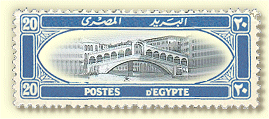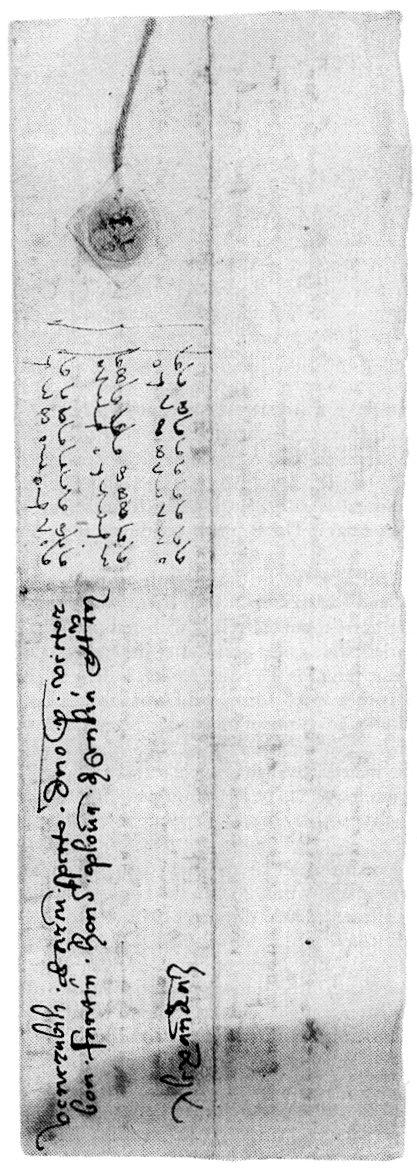

The history of postal services in Egypt in ancient times is well described, with illustrations, in the book' published for the delegates to the 1934 Congress of the UPU. It begins with an account of the types of hieroglyphic script; the style familiar from monumental inscriptions, formal and decorative, was obviously not suited for practical communications. Consequently, letters written on papyrus in the Pharaonic times used either a simplified version, hieratic, or an even more simplified one, demotic. Much later, after Egypt became largely Christian, the Coptic alphabet, based on the Greek, with six new letters, became prevalent. A brief account in English has been written by Hurt2.The pharaonic mails were essentially for matters of state, and not available to the civil population. Civilian mail was almost non-existent, but rich people sent messages by slaves. The first regular service was in the Ptolemaic period3, and papyrus letters (mostly fragmentary) survive from as early as the third century BC. A letter from Fayum to Alexandria is said to have required only four days. The Romans continued the postal service and improved it. The Arab post was founded by the Calif Moawia in the seventh century AD. It extended as far south as Nubia and Suakin, and east to Gaza. Much later, Sultan Baibars (13th century) reorganized the posts, using horse-mounted relays with stations (khans) four farsakhs (ca. 16 miles) apart4. The couriers were called baridi after the special cut of the horses' tails; from this, the modern Arabic term for the posts, bareed, is derived. The service reached not only Nubia, but also Damiata in the north, and Damascus (via Gaza) in the east. For especially speedy transmission of government messages, a pigeon post was established, serving Alexandria, Cairo, Damiata, Assuan, and Damascus, inter alia. For the most part, there is no philatelic material available to collectors from any of the foregoing postal services except for some fragments of letters on papyrus from the Ptolemaic period as well as cuneiform clay tablets that exist outside of museum collections. Curiously, Les Postes en Egypte makes no mention of the Venetian posts which operated to and from Egypt as well as occasionally within it from the late 14th century to the early 16th. The Venetians had a vast fleet (ca. 3300 ships in 1405!), which served ports all over the eastern Mediterranean, including Alexandria5. A description of the Venetian service is given in an article, "La Poste Medieval en Terre Sainte", by Tolkowskyb. Service to Alexandria was monthly. In the 16th century the journey took from 17 to 90 days (average, 52 days) and a letter was charged according to distance and speed, the latter being most important7. The cost was very high and could amount to more than a month's earnings.  Little was known about the Venetian post until some archives of letters began to appear on the market from the 1950s. At first they brought rather low prices (£5-10), but as they became better appreciated, the prices increased (mostly £200 or more since the 1980s). A useful general introduction to them (not specifically Egyptian) is to be found in the fore pages of a Christie's Robson Lowe catalogues. Lots 665-672 consisted of letters from Egypt, but only small parts of them were illustrated. More examples were offered in a later auction (Nov. 10, 1987, lots 57-61), and many more have appeared in other auctions, but less often illustrated. Letters were carried not only between Alexandria and Venice, but also to and from Cairo and Damiata (presumably in part by couriers).
Little was known about the Venetian post until some archives of letters began to appear on the market from the 1950s. At first they brought rather low prices (£5-10), but as they became better appreciated, the prices increased (mostly £200 or more since the 1980s). A useful general introduction to them (not specifically Egyptian) is to be found in the fore pages of a Christie's Robson Lowe catalogues. Lots 665-672 consisted of letters from Egypt, but only small parts of them were illustrated. More examples were offered in a later auction (Nov. 10, 1987, lots 57-61), and many more have appeared in other auctions, but less often illustrated. Letters were carried not only between Alexandria and Venice, but also to and from Cairo and Damiata (presumably in part by couriers).
The earlier letters are characteristically written in a cramped, ungraceful hand, and even the addresses are very difficult to decipher (Fig. 1). The addresses begin with a series of honorific's ('honourable', 'respectable', 'noble', etc.) and the destination is generally found near the bottom. There is sometimes a notation of the date of arrival; the date of dispatch must be presumed from the date at the head of the letter. The letters are naturally written in Italian, or an Italian-based lingua franca, using some cryptic abbreviations and spellings that may differ considerably from modern Italian.Regarding dates, it is important to bear in mind that the Gregorian calendar was introduced in March 1582 only in the Roman Catholic countries of western Europe (in England, not until 1750). Letters between Egypt and Venice in 1582 and for some time afterwards might be dated inside by one calendar, but be docketed outside by the other calendar (the Gregorian calendar was ten days later than the Julian).By the 18th century, the Venetian post had waned, handwriting had improved markedly, and addresses are relatively easy to read. Fig. 1 A letter from Damiata to Alexandria in 1420. It had become customary to entrust a letter to a specific ship, often identified by the name of its captain (Fig. 2). Endorsements to this effect are usually found at the lower left and may take such forms as "Con Capri Beaunier" or "Con nave d'Capne Ruban". They are usually accompanied by an invocation for safe passage, as "QDC" ("que Dieu conduise") or "CDC" ("che Deo conduce"). Times of passage were still long, in extreme cases requiring more than a year; they were affected by storms, unfavorable winds, wars, epidemics, and piracy.  There were no handstamped markings of any kind used on letters to or from Egypt before 1798. Monograms or guild signs, handwritten, are found on some letters. Most letters were sealed with a wax wafer, to which a piece of string was affixed. The paper itself was generally of high quality, 100% cotton fibre, and has survived the centuries remarkably well (stains, however, are to be expected, probably as a result of disinfection). Although there are now many Venetian and later letters on the market, those associated with a specific country, such as Egypt, are moderately rare. However, they have yet to achieve the popularity of covers bearing handstamps, such as those of the Napoleonic Post (Chapter 11), and prices are not in proportion to the rarity.
There were no handstamped markings of any kind used on letters to or from Egypt before 1798. Monograms or guild signs, handwritten, are found on some letters. Most letters were sealed with a wax wafer, to which a piece of string was affixed. The paper itself was generally of high quality, 100% cotton fibre, and has survived the centuries remarkably well (stains, however, are to be expected, probably as a result of disinfection). Although there are now many Venetian and later letters on the market, those associated with a specific country, such as Egypt, are moderately rare. However, they have yet to achieve the popularity of covers bearing handstamps, such as those of the Napoleonic Post (Chapter 11), and prices are not in proportion to the rarity.
Fig 2. A letter entrusted to a shop's Captain in 1711 References
|
|
|